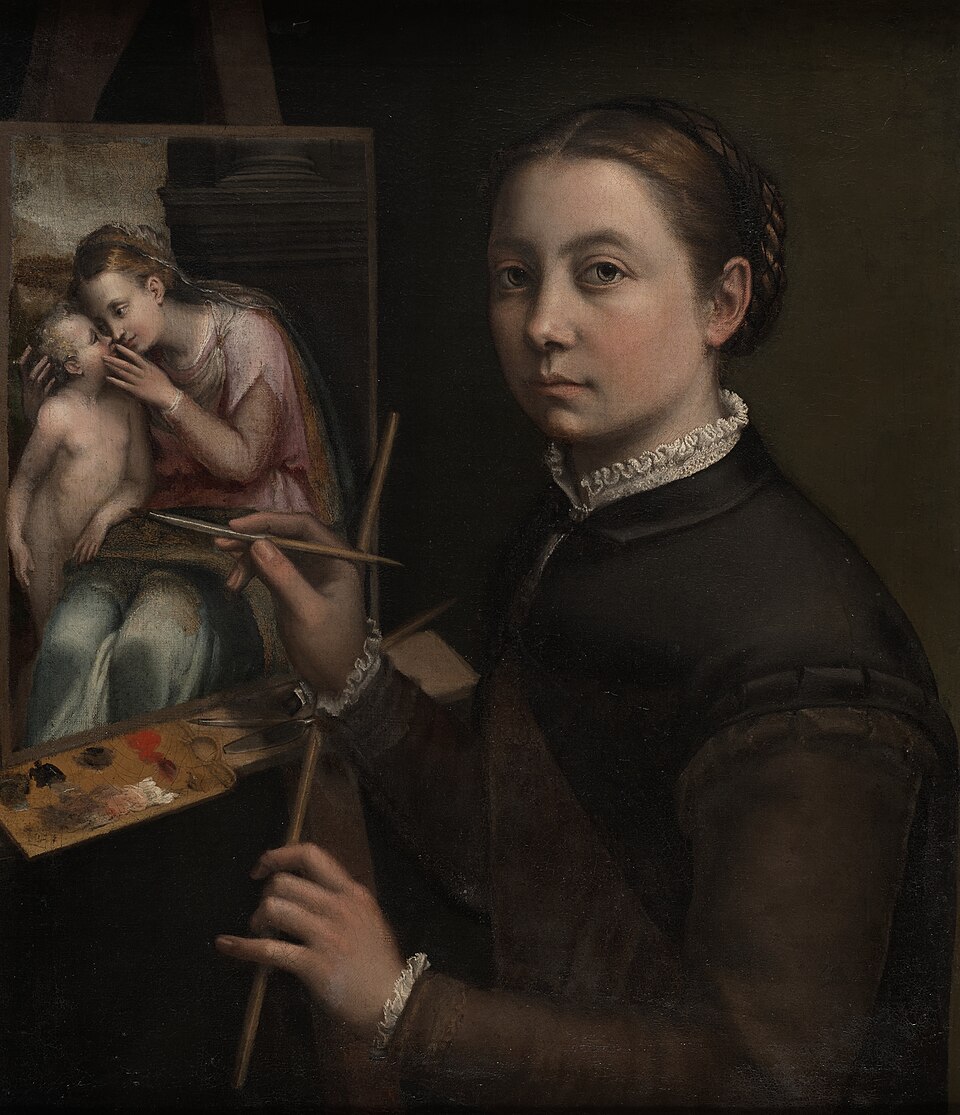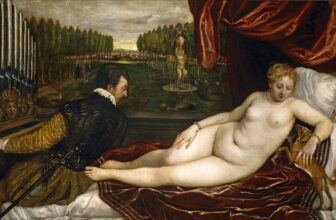
Sofonisba Anguissola’s Most Famous Paintings
When we speak of the Italian Renaissance, familiar names like Leonardo da Vinci, Michelangelo, or Raphael instantly come to mind. Yet, woven into this great artistic era is the remarkable story of Sofonisba Anguissola (1532–1625), one of the earliest known female painters to achieve international recognition. In an age where women were largely excluded from formal artistic training and professional guilds, Sofonisba carved out a career that defied the conventions of her time. Her legacy is not just in her art but also in how she opened doors for future women in the arts.
This article explores Sofonisba’s fascinating life, her most famous paintings, the number of works attributed to her, where her paintings are located today, her artistic legacy, and even the financial value of her art in the modern world.
The Life Story of Sofonisba Anguissola
Sofonisba Anguissola was born in 1532 in Cremona, a city in northern Italy. She was the eldest of seven children in a noble family. Her father, Amilcare Anguissola, believed deeply in education for all his children, daughters included, which was highly unusual for the time. He ensured that Sofonisba and her sisters received a humanist education, including the study of Latin, music, literature, and most importantly, painting.
Unlike many women of her era who were restricted to domestic roles, Sofonisba’s natural talent was encouraged from an early age. She studied with local painters Bernardino Campi and Bernardino Gatti, where she learned the fundamentals of drawing, perspective, and portraiture.
Her abilities soon surpassed what was expected of a woman artist. Word of her talent spread, and by the time she was in her twenties, she gained international attention. In 1559, she was invited to the Spanish court of King Philip II in Madrid, where she became court painter and art tutor to Queen Elisabeth of Valois. This role not only secured her reputation as one of the leading portraitists of her time but also gave her unprecedented access to power and patronage.
Sofonisba lived a long life, passing away in 1625 at the remarkable age of 93. She witnessed the height of the Renaissance, the rise of Mannerism, and the transition into the early Baroque period. Her long career gave her time to refine her style and mentor others, ensuring her influence carried on beyond her own lifetime.
What is Sofonisba Anguissola Known For?
Sofonisba Anguissola is best known for her portraiture, which captured not only the likeness of her subjects but also their inner character. Unlike many portraits of the era that emphasized wealth and status through elaborate clothing and props, Sofonisba focused on psychological depth. Her paintings often revealed subtle gestures, intimate expressions, and emotional connections between sitters.
She was also celebrated for her genre scenes, paintings that depicted everyday life, often featuring her own family members. These works were rare for women artists of her time and demonstrated her observational skills and creativity.
One of her major contributions to art history was her ability to show women and children as subjects of dignity, individuality, and vitality, an innovation in an era dominated by male perspectives.
Sofonisba produced dozens of works during her career, many of which survive in major collections worldwide. Her most famous paintings include:
1. The Chess Game (1555)
This is perhaps Sofonisba’s most iconic work. It depicts her sisters Lucia, Minerva, and Europa playing chess while their maid looks on. The painting is striking for its liveliness, the sisters are caught mid-game, with animated expressions and gestures. It captures the refinement of her noble family while also showing a rare domestic scene of intellectual engagement among women. Today, this masterpiece is housed in the National Museum in Poznań, Poland.
2. Self-Portraits
Sofonisba painted numerous self-portraits throughout her life, which collectively serve as a visual autobiography. Her early self-portraits emphasize modesty and virtue, in line with Renaissance ideals of female decorum. Later portraits reveal greater confidence and maturity. Some of her best-known self-portraits are located at the Museum of Fine Arts, Boston, the Museo del Prado in Madrid, and the Louvre in Paris.
3. Portrait of Elisabeth of Valois (1565)
As official court painter, Sofonisba created refined portraits of Spanish royalty. This depiction of Queen Elisabeth of Valois, wife of Philip II, highlights her elegance and regal presence. The restrained yet dignified composition became a model for court portraiture.
4. Portrait of Philip II of Spain
Though fewer in number than her female portraits, Sofonisba also painted the king himself. These works contributed to the official iconography of one of Europe’s most powerful monarchs.
5. Boy Bitten by a Crayfish (1554)
This small but powerful painting demonstrates her gift for realism and humor. It shows her younger brother crying out in pain after being pinched by a crayfish. The work is often compared to Caravaggio’s later painting Boy Bitten by a Lizard (1595), suggesting Sofonisba’s influence extended into the next generation.
6. Family Portraits
Sofonisba often painted her siblings in informal, lively poses, something unusual at the time. These works serve both as intimate family records and as groundbreaking contributions to Renaissance portraiture.
How Many Paintings Did Sofonisba Anguissola Create?
Art historians estimate that around 50 to 100 works can be attributed to Sofonisba Anguissola, although the exact number is debated. Part of the difficulty lies in attribution, many works were unsigned, and as a woman, her contributions were sometimes overlooked or misattributed to male contemporaries.
Her long life and extensive travels mean that some of her works have been lost, while others are still being rediscovered in private collections or reattributed after centuries of misidentification.
The Most Expensive Painting of Sofonisba Anguissola
The art market for Sofonisba’s works has grown significantly in recent decades as her importance in art history has been reevaluated. While she is not yet as commercially prominent as some of her male Renaissance peers, her paintings have fetched high prices at auction.
One of her self-portraits, sold at Sotheby’s in 2018, achieved nearly $1.5 million, making it one of the most expensive works by a female Renaissance painter ever sold. Other works attributed to her have sold in the range of hundreds of thousands of dollars, with rising interest as museums and collectors seek to correct the historical imbalance of women artists in collections.
Where Are Sofonisba Anguissola’s Paintings Located Today?
Sofonisba’s works are scattered across museums and private collections worldwide. Some of the most notable locations include:
Museo del Prado (Madrid, Spain): Holds several of her portraits, including those of Philip II and Elisabeth of Valois.
Louvre Museum (Paris, France): Features one of her celebrated self-portraits.
National Museum (Poznań, Poland): Home to The Chess Game.
Museum of Fine Arts (Boston, USA): Houses one of her earliest self-portraits.
Vienna Art History Museum (Austria): Contains several portraits attributed to her.
Madrid’s Royal Collections: Includes works created during her time at the Spanish court.
Private Collections: Many of her works remain in private hands and occasionally surface at auctions.
Sofonisba Anguissola’s Legacy
Sofonisba’s legacy is profound, not just for the beauty of her paintings but for her role as a trailblazer for women artists. At a time when women were excluded from artistic guilds, denied access to anatomy classes, and discouraged from painting professional commissions, Sofonisba proved that women could excel in fine arts.
Her success paved the way for later women painters, including Artemisia Gentileschi, Lavinia Fontana, and Fede Galizia. Unlike many of her male contemporaries, she was not only respected in her lifetime but also celebrated well into her old age.
In her later years, Sofonisba became a mentor to younger artists, including the Flemish painter Anthony van Dyck, who visited her in Palermo in 1624. Van Dyck described her as nearly blind but still sharp of mind, and he credited her with giving him invaluable advice about painting and observation.
Today, Sofonisba Anguissola is remembered as a pioneer of female creativity in the Renaissance, an artist whose works bridged intimacy and dignity, and whose career demonstrated the possibility of women entering and excelling in the highest levels of European art.
Sofonisba Anguissola’s story is one of talent, resilience, and quiet revolution. Born into a noble family in Cremona, she overcame the limitations imposed on women of her era to become a court painter, an international figure, and a role model for generations of artists.
Her most famous works, The Chess Game, her numerous self-portraits, Boy Bitten by a Crayfish, and her royal portraits, stand as testaments to her skill and originality. With around 50–100 works attributed to her and a growing presence in museums around the world, her legacy continues to expand.
Though her paintings have not reached the astronomical prices of some of her male contemporaries, their cultural and historical value is priceless. More than just a painter, Sofonisba Anguissola represents the breaking of barriers, the redefinition of artistic possibility, and the enduring power of art to transcend societal limitations.
As modern scholarship continues to shed light on her career, Sofonisba’s rightful place in art history becomes clearer: not only as one of the greatest portraitists of the Renaissance but as a pioneer who changed what it meant to be a woman and an artist in Europe.




